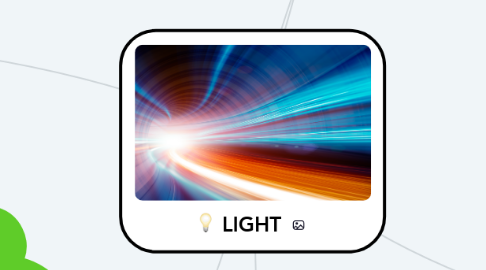
1. Properties Of light
1.1. Wavelength Spectrum
1.2. Direction
1.3. Intensity
1.4. Polarization
1.5. Interference
1.6. Scattering of light
1.7. Refraction
1.8. Dispersion
2. Electromagnetic Waves
2.1. Discovery
2.1.1. Electromagnetic Waves were Officially discovered by in 1887 when a German physicist Heinrich Hertz discovered low-energy electromagnetic waves that we now call radio waves.More proof of the existence of electromagnetic Waves was in 1895 when William Konrad, another German scientist, discovered high-energy electromagnetic waves called x-rays.
2.2. Properties
2.2.1. They are transverse Waves (a wave vibrating at right angles to the direction of its propagation)
2.2.2. They don't require medium (Medium is any physical substance thats acts as a carrier for the transmission of energy) to travel from one point to another.
2.2.3. They travel at the light of speed
2.3. Examples
2.3.1. X-ray
2.3.2. Radio Waves
2.3.3. Microwaves
2.3.4. Gamma rays
3. Laser Light properties and Uses
3.1. Properties
3.1.1. light of laser is highly monochromatic (only 1 colour).
3.1.2. Its light is highly coherent
3.1.3. laser light is highly directional meaning light moves staright in 1 direction
3.1.4. light of laser can be sharply focused meaning it could be dangerous if pointed towards an eye or such
3.2. Uses
3.2.1. A high energy laser can be used to burn a hole through steel in a manufacturing process
3.2.2. It can also be used by a surveyor to measure distance. (Scientists have used it to measure the Earth-Moon distance 385,000 km with an accuracy of 3 cm.
3.2.3. It is also used in the process of tattoo removal
4. Ways Light is produced
4.1. Incandescence: From/as a result of high temperature
4.2. Electric Discharge: Passing an electric current through a gas
4.3. Fluorescence: Emitted by some substance when exposed to electrogenic radiation
4.4. Phosphorescence: Absorption of ultraviolet light resulting in the emission of visible light over an extended period time.
4.5. Bioluminescence: Chemical reaction
4.6. Triboluminescence: Produced by Friction as a result of scratching, crushing, or rubbing certain crystals
4.7. Chemiluminescence: Direct production of light as the result of a chemical reaction with little or no heat production
4.8. Light- Emitting Diodes (LED): Electric current flowing in semiconductors
5. 3 Ways Light is Transferred
5.1. Radiation
5.1.1. A method of of energy transfer that does not require a medium; the energy travels at the speed of light.
5.2. Conduction
5.2.1. The process by which heat or electricity is directly transmitted through a substance when there is a difference of temperature without movement of the material.
5.3. Convection
5.3.1. Convection is the heat transfer due to the bulk movement of molecules within fluids such as gases and liquids, including molten rock (rheid)
6. Uses of Electromagnetic Waves
6.1. Microwaves
6.1.1. Used for cooking food, communications and for satellite communications
6.2. Fluorescent
6.2.1. Used as light lamps
6.3. Infrared
6.3.1. Used by electrical heaters, cookers for cooking food, short-range communications like remote controls, optical fibres, security systems
6.4. Radio Waves
6.4.1. Used for communication such as broadcasting television and radio
6.5. Visible light
6.5.1. Used in photography and illumination
